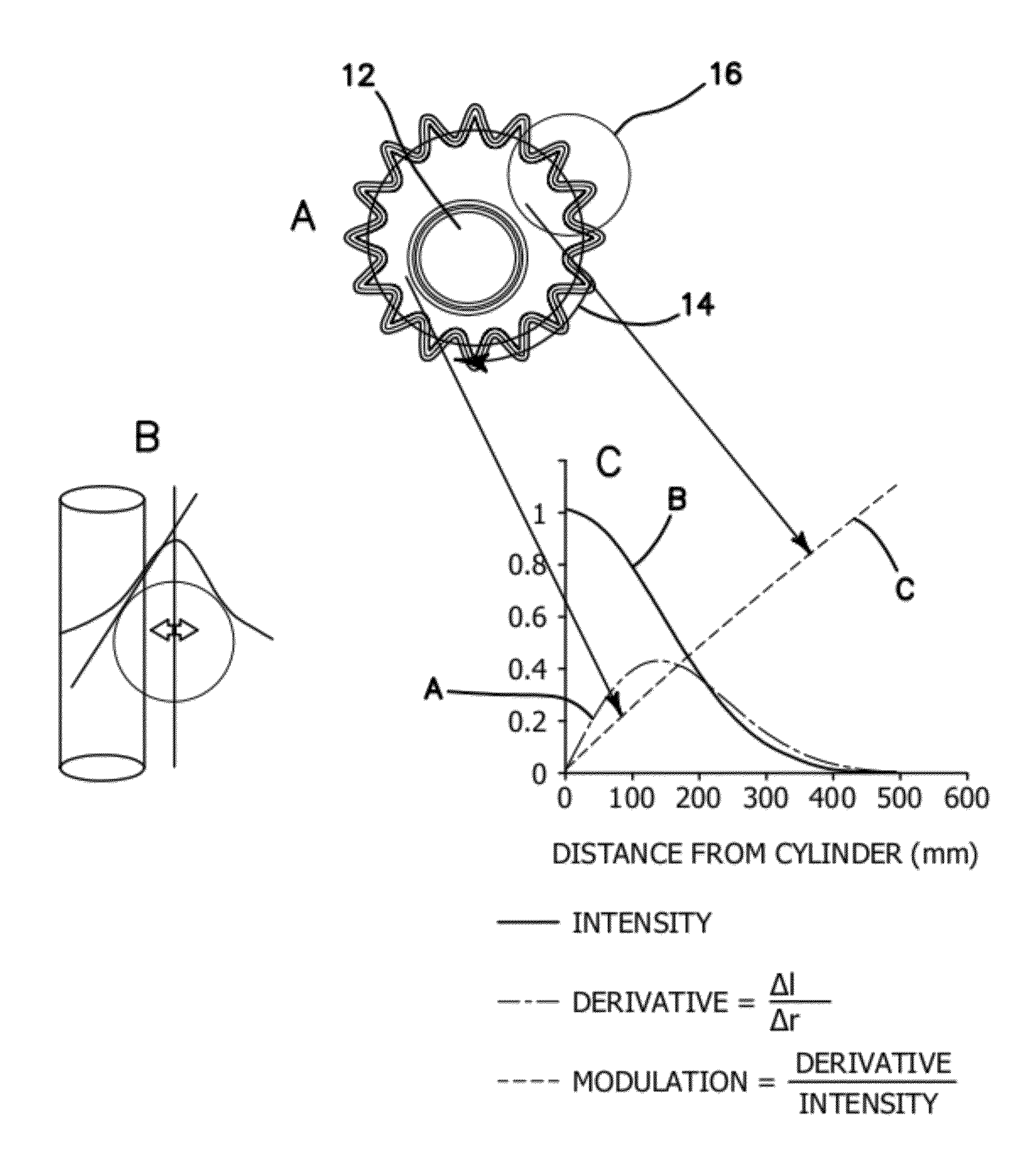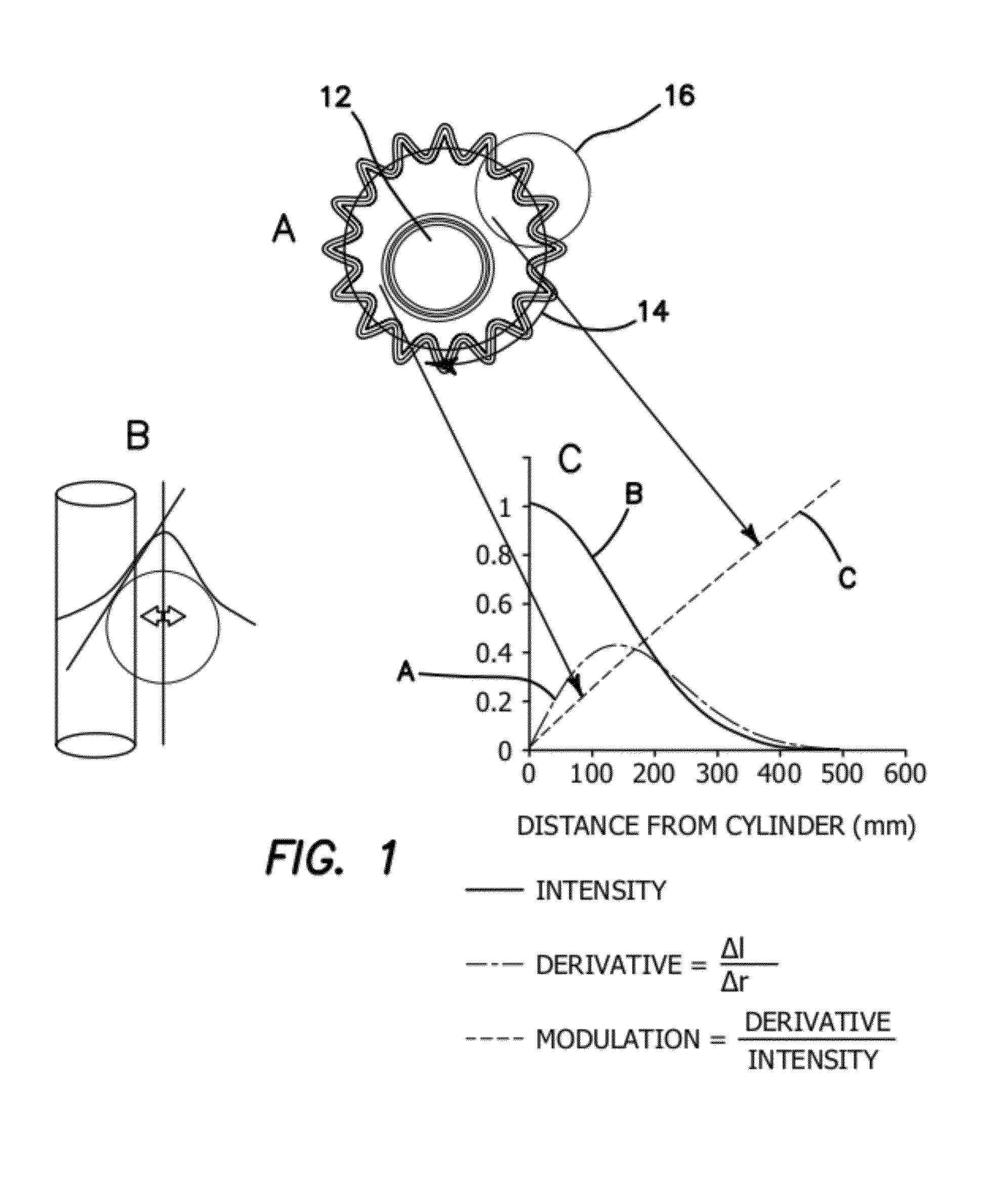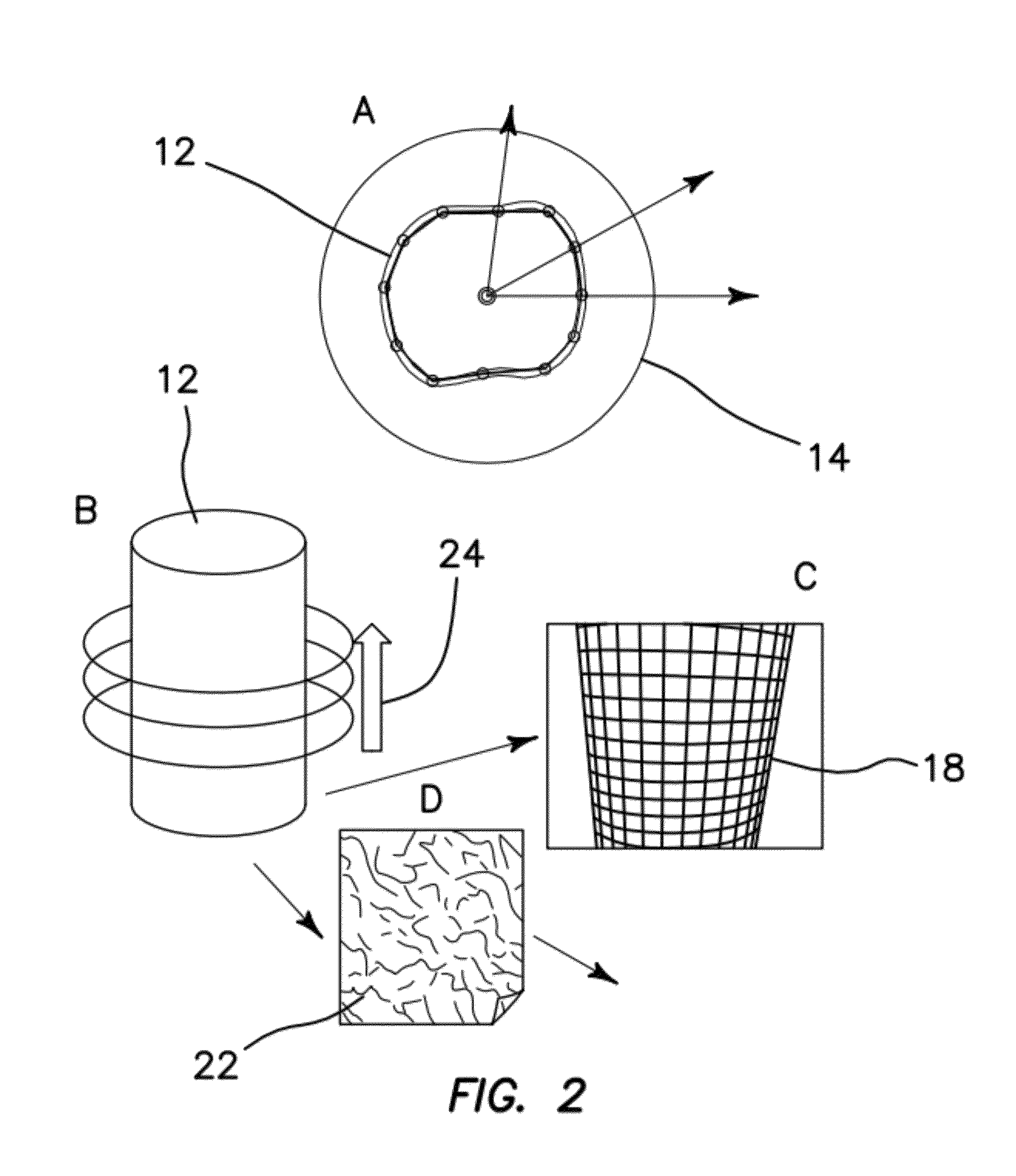Nanometer-scale optical imaging by the modulation tracking (MT) method
a technology of optical imaging and modulation tracking, applied in the direction of optical elements, distance measurement, instruments, etc., can solve the problems of inability to measure the clustering dynamics of proteins using nano-imaging optical methods, and the fluorescence intensity alone cannot be used to determine the distance of the spot from the fluorescent surfa
- Summary
- Abstract
- Description
- Claims
- Application Information
AI Technical Summary
Benefits of technology
Problems solved by technology
Method used
Image
Examples
Embodiment Construction
[0050]The illustrated embodiments include an optical imaging method for producing nanometer-resolved three dimensional images of very small and moving features in live cells and in a matter of seconds. The method keeps the laser spot at a constant distance from a fluorescent surface using feedback control. The distance from the surface is determined in real time during the acquisition. Since the position of the laser spot and the distance from the surface is known, the shape of the object can be reconstructed.
[0051]One of the objects of the illustrated embodiments is to image small and sparse features of live cells. These features can be cell protrusions, typical of cell types like neurons, protrusion forming during cell movements or other typical cellular structures like microvilli. The shape of these features are reconstructed with nanometer resolution and the localization of specific molecules mapped on their surface. This approach to nano-imaging allows us to perform fluorescenc...
PUM
 Login to View More
Login to View More Abstract
Description
Claims
Application Information
 Login to View More
Login to View More - R&D
- Intellectual Property
- Life Sciences
- Materials
- Tech Scout
- Unparalleled Data Quality
- Higher Quality Content
- 60% Fewer Hallucinations
Browse by: Latest US Patents, China's latest patents, Technical Efficacy Thesaurus, Application Domain, Technology Topic, Popular Technical Reports.
© 2025 PatSnap. All rights reserved.Legal|Privacy policy|Modern Slavery Act Transparency Statement|Sitemap|About US| Contact US: help@patsnap.com



